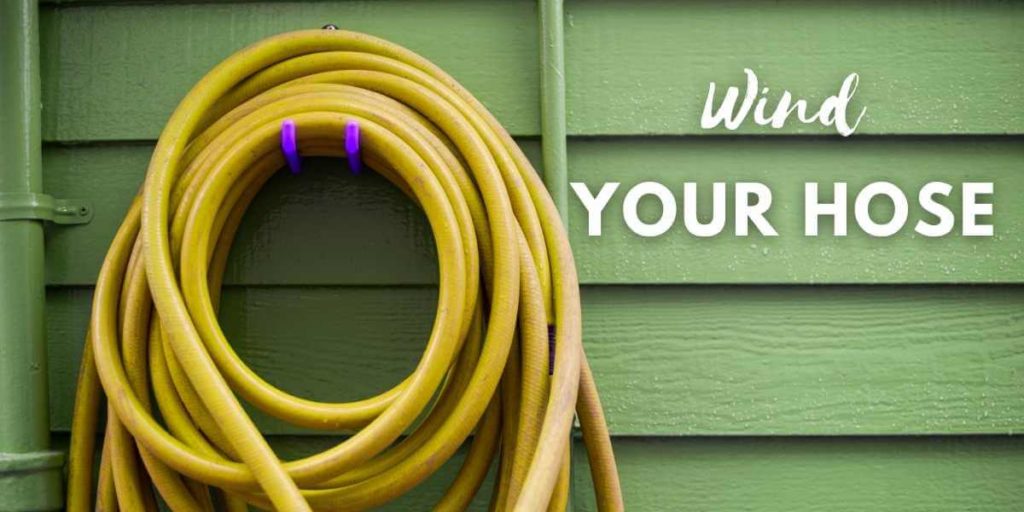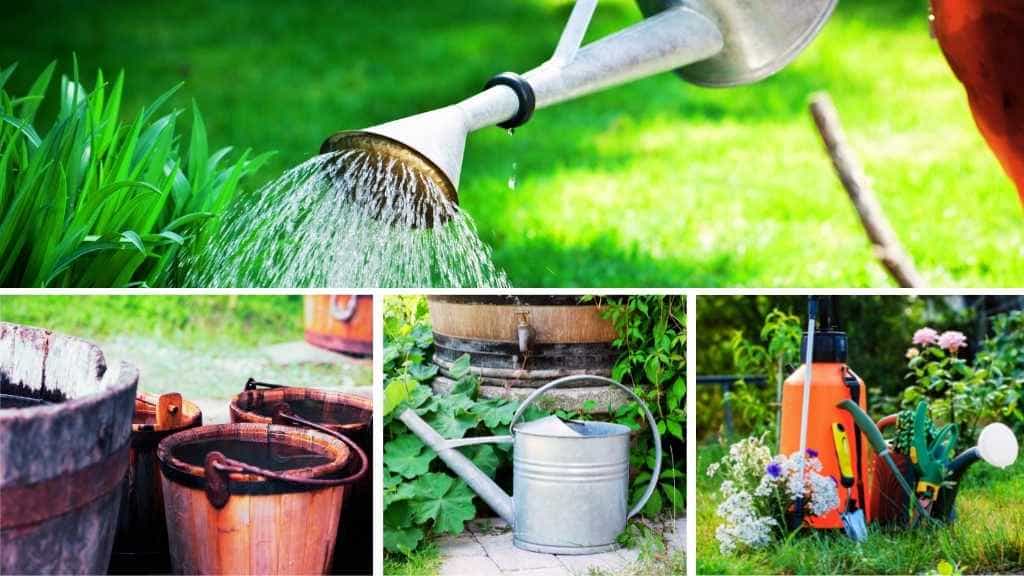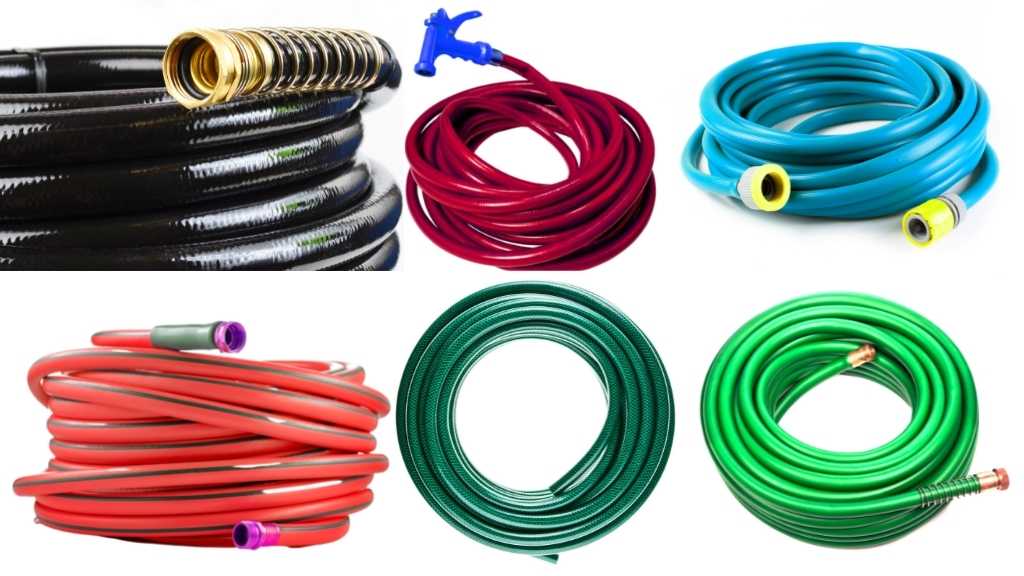Taking care of your hoses and hose fittings saves you a lot of money in the long run, as you will be able to use them for longer periods of time. Winding your garden hoses properly is the easiest maintenance you can do, as it has a great impact on increasing the lifespan of your hose.
Developing this habit of properly coiling and uncoiling the water hoses helps the hose maintain its initial characteristics and specs. Therefore it ensures the same quality and functionality of the hose is kept, increasing the hose life.
How to Wind a Hose Quickly in 9 Simple Steps
1. Turn off the water supply from the hose bib
2. Disconnect the hose from the outdoor facet
3. Remove the sprayer or other attachments on the other end of the hose
4. Wait for the water inside the hose to drain
5. Grab the hose but leave a few feet of distance between the hose bib and the spot that you grabbed
6. Start rolling a large loop using around 3 feet of hose and place it on the ground
7. Move 2 feet away from the first loop and form a similar second loop
8. Stack the second loop on top of the first loop
9. Repeat this process until the entire length of the hose is winded
To avoid storing the hose on the ground, you can easily set up a hose holder near your outdoor faucet and place the hose on the holder once you finish the above-mentioned winding steps.
How to Wrap a Hose By Hand
Short water hoses can be easily coiled over the arm, but this action becomes impossible if you have 50 or 100 feet of water hose that you need to wind.
Luckily there are other workarounds to wrap the water hoses by hand even if you don’t have a hose reel.
Below are some of the most popular options we could think of, which you can try for yourself.
Option 1 – Wind the garden hose directly on the ground
If you choose this option, use the same steps as explained above, in the first section of this post
Option 2 – Use an empty outdoor trash bin as a guide
Use an empty outdoor trash bin as a guide for winding the gardening hose into large loops.
- Take steps 1 to 4 mentioned in the first section of the post, to correctly prepare the hose for coiling.
- Start rolling the hose around the trash bin base, not too tight, in large loops, one loop on top of the other
- Continue until the full length of the hose is rolled
- Pick up the trash bin and move it away from the hose
- Pick up the winded hose and store it properly on a hose holder
Option 3 – Wind the hose using wood sticks
You need two wood sticks for this action. You can also use two pieces of rebar, strong plastic pipes, or other leftover pipes that you might have available in your garage.
- Find two thick and more resistant wood sticks that are around 5 feet long
- Bury them about 15 inches into the ground, at about 5 feet away from one another
- Start rolling the hose in loops, around the two wooden sticks. You can do a large circle loop, or an 8-figure loop, as you prefer.
- Pick up the winded hose and store it properly on a hose holder
Option 4 – Use 2 utility hooks as a vertical holder
You can buy utility hooks at any hardware store.
- Install the hooks onto a fence or wall, and keep around 5 feet distance between them
- Start coiling the hose around the hooks, not too tight, until the full length is winded.
- Pick up the winded hose and store it properly on a hose holder
Alternatively, if there is no direct sunlight on the fence or wall where you have installed the utility hooks, you can also use the hooks as garden holders. Then keep your hose stored vertically, on the 2two hooks, after you finished coiling it.
Option 5 – Use a garden hose holder
Wind the garden hose on a holder directly, no matter if you have a ground-mounted hose holder, a wall-mounted one, or any other type of vertical hose holder. The hose winding is similar to the other cases discussed above.
- Properly disconnect the hose from the spigot as explained above, in the first section of the post
- For ground-mounted hose holders – start by leaving around 3 feet of the hose hanging toward the ground
- Then start rolling the hose from the female end side, into large loops until the full length of the hose is winded
- For wall-mounted hose holders, do the same steps but there is no need to leave the end of the hose hanging.
It is recommended that you always start the hose winding process with the female end of the hose and finish with the male end side.
How to Coil a Flexible Garden Hose
It is a known fact that flexible garden hoses will expand up to 3 times their length when the water is on and will automatically contract to the initial length when the water supply is turned off.
These garden hoses are very lightweight compared to the other standard hoses.
Most flexible hoses have a suitable hose holder and a carrying bag included in the package by the manufacturer.
So, depending on the length of the flexible garden hose that you own, you might consider the below options in terms of how to wind it after use.
- Roll the hose over your arms if the length of the hose allows it
- Turn off the water supply and wait for the expandable hose to self-drain and compact itself to the original size
- Disconnect the hose from the outdoor spigot
- Grab the female end of the hose in your hand and start bending the hose around your arm
- Continue until the full length is rolled.
- Store the hose onto the hose holder as explained in the previous section of this post
- After the hose is dried, place it into its carrying bag to better protect it until future use.
- Wind it directly on the ground if the length of the hose is longer
- You can wind the flexible hose in the same way as for the other types of hoses, but it might be better to keep the loop smaller, as the hose flexibility will allow it.
- Take the same steps as explained in point 1 above, but instead of rolling it against your arm, place the female end of the hose on the ground and start forming loops, one on top of the other until the full length is winded.
- Store the flexible hose on a holder or carrying bag, once it is dry.
- Wind the expandable hose on a hose reel, like you would do with any other type of garden hose
You can read more about how to wind a garden hose on a hose reel in the below section of this post
How to Wind a Garden Hose on A Reel
First things first, if you have just purchased a hose reel or hose reel cart check if any assembly is required by comparing it to the user instructions provided by the respective manufacturer in the hose reel package.
Normally a hose reel should have 2 pairs of hose connectors included in the package. This is because you need to have a leader hose that connects the hose reel to the water supply, and then the regular garden hose which will be rolled onto the hose reel.
One set of connectors is used for connecting the leader hose on one end to the outdoor spigot and on the other end with the hose reel.
The second set of connectors is used for connecting the large garden hose on one end to the hose reel and on the other end to the hose sprayer.
In conclusion, to wind a hose on a garden hose reel, you must do the below actions:
- Create a leader hose as explained previously – If you don’t have a leader hose already included in the hose reel package, you can easily cut around 5 feet in length out from your garden hose. This newly created hose is called a leader hose.
- Add the connectors on both ends of the leader hose and the garden hose
- Attach one end of the leader hose to the exterior water coupling connection of the hose reel
- Connect the large garden hose to the interior water coupling connection of the hose reel
- Start winding the large garden hose by spinning the hose reel navigator
- Roll the hose on the reel carefully, in layers, one layer on top of the other until the full length of the hose is rolled
- Attach a hose nozzle sprayer on the other end of the garden hose
- Take the hose reel with the winded hose near your outdoor water faucet
- Attach the other end of the leader hose to the faucet
- Turn on the water from the faucet
- Pick up the hose sprayer and turn it on to check if water flows properly and if there is any water leaking. In case this happens, check if the connectors are properly installed.
The above winding process is standard for most of the hose reels and hose reel carts. There might be some brand-related particularities such as the included connectors in the package. Most of the manufacturers will provide all the accessories that are needed for the proper use and installation of the hose reel.
How to Rewind A Garden Hose
New garden hoses can develop a coiling memory. This is why sometimes they tend to maintain the same shape that they had while they were stored in the package. When unpacked they keep a circle-like shape, and because of this, using a new hose can become complex and you can hurt the plants while trying to water them.
Therefore, it is good to know how to correctly uncoil a new hose.
To clear the hose memory before the first use, a set of actions are necessary, as detailed below:
- Connect the female end of the hose to the outdoor facet
- Uncoil the rest of the hose, in a straight line if possible
- Connect a hose cap on the male end of the hose, to prevent water from flowing
- Turn on the faucet until you see the entire hose is filled with water
- Turn off the water supply and leave the hose to rest for around 2 or 3 hours
- After enough time passed, remove the cap so the water can drain from the hose.
Another option is to lay the hose on the ground. Then place a brick on top of one end, extend the full length of the hose in a straight line and place a second brick on the other end.
The bricks should not be very heavy, the only purpose they will have is to stop the hose end from moving.
Keep the hose like this for up to 2 hours and then remove the bricks.
These actions should help with removing hose memory and reshaping it into a straighter form than before.
Coiling a Hose – Why Is It Important?
Hose winding is a necessary action to take not only for improving the garden aesthetics and keeping the gardening tools organized.
The major benefits of winding your hoses regularly are related to increasing the lifespan of the hoses and keeping them in good shape. If you care for your hoses and maintain your backyard hoses properly you can enjoy using them for years, without needing any repairing.
In this post, you will find all the information you need related to how to correctly wind a garden hose. No matter if you simply use your bare hands, a holder, or a reel, you will find here the step-by-step guide to properly complete this action.
External Sources: https://www.gardena.com/au/support/advice/garden-hose-instructions/
Are you looking for a garden hose reel holder? Check our recommendations below:
- 5 Best Hose Reel Carts with 4 Wheels
- 5 Best Hose Reel Carts with 2 Wheels
- 5 Best Automatic Rewind Self-Retractable Hose Reels
- 5 Best Freestanding, Ground Mounted Hose Reels with A Crank Handle
- 5 Best Wall-Mounted Hose Reels With Crank Handle
- 5 Best Decorative Hose Holders and Hose Stands
Read more about garden hose reels here:



